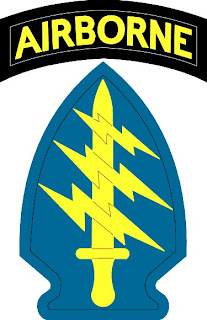Night Vision

I know you've deceived me, now here's a surprise
I know that you have cause there's magic in my eyes
I can see for miles and miles and miles and miles and miles
--I Can See for Miles, The Who
I can see clearly now, the rain is gone,
I can see all obstacles in my way
Gone are the dark clouds that had me blind
It’s gonna be a bright, bright
Sun-Shiny day.
--I Can See Clearly Now, Johnny Nash
In May, I already knew the war was turning the corner.
. . . All this to turn Iraq into a place
where you could buy Red Bull and flat-screens.
--Toby Kieth
________________
I know that you have cause there's magic in my eyes
I can see for miles and miles and miles and miles and miles
--I Can See for Miles, The Who
I can see clearly now, the rain is gone,
I can see all obstacles in my way
Gone are the dark clouds that had me blind
It’s gonna be a bright, bright
Sun-Shiny day.
--I Can See Clearly Now, Johnny Nash
In May, I already knew the war was turning the corner.
. . . All this to turn Iraq into a place
where you could buy Red Bull and flat-screens.
--Toby Kieth
________________
Mr. Keith -- now there's a man who has his eye on the ball.
We look, but what do we really see? What follows is a military sight technique which applies to civilian life, as well.
As a young soldier, Ranger was taught the off-center vision technique for night vision. Since night vision is so important to soldiering, the technique is considered a basic combat skill. It is a method for discerning elements of your environment which might remain otherwise obscured to you.
The class was conducted in a blacked-out room with curtains on the windowless walls. The off-center technique for night (scotopic) vision utilizes the rods, receptor cells in the retina which need only a single photon of light, and rhodopsin, a pigment in the retina depleted by exposure to bright light.
While they rods are highly sensitive to movement, they function best at the periphery of our vision. Successful scotopic vision requires understanding how your vision functions, and knowing how to access and process what you are capable of sensing in a light-poor environment.
Staring directly at an object depletes the rhodopsin, reducing one's visual capacity. While blinking may help, the point of the exercise is to learn to see something without directly looking a it. The technique involves scanning the environment in circular motions, never focusing on the object, simply perceiving it.
During the class, the curtains are pulled back and the class is instructed to look for enemy and friendly equipment. The walls were covered with pictures, and they became clearly outlined after the offset technique was utilized.
The off-center technique was also used to detect movement or incongruity in a landscape. Ranger's eye senses movement best, a skill that aids in longevity. The ability to detect incongruity would add another level of protection. The analog to civilian life might be to avoid errors which would ensue from engaging with otherwise unperceived incompatibilities and inconsistencies.
We are generally told to "keep our eyes open," but no one tells us how to see, or explains the intricacies of the visual process. Hence, we are often kept "in the dark" about even the simplest things. We feel that if we add the expertise of analysis (ours or another's) to our vision, we can somehow arrive at a more complete truth. However, perhaps the thing necessary is to learn how to see more correctly.
Ranger was 21-years-old when he learned this technique, and can not say that he effectively integrated its lessons into his daily life at that time. We are self-deluded by pride, or patriotism, or whatever guides us, and we see through that lens the things that confirm our self-image. But this viewing technique can be applied universally. It is a simple visual skill which would also help achieve clarity when looking at the Phony War on Terror (PWOT ©) and everything else happening in the U.S.
If one looks at any event for too long, something on the flank will pop up and present a danger. There has been a monomaniacal focus on terrorism the past several years, yet it is evident that there are several threats on our national horizon that we run our eyeballs over to our detriment.
Unless scanned properly, these threats may flank our defensive positions. This would be catastrophic since our positions are not in depth, and lack mutual support. We have been looking at a phony terror threat in Iraq and Afghanistan for so long that our eyes no longer properly function.
Without the correct input, our brains are useless.
Labels: night vision, off-center viewing technique, phony war on terror, PWOT, visual scanning technique











4 Comments:
Damn! Does this bring back memories of my Basic training in 1965! I never went to AIT but we got a movie about this very subject on the technique of side vision perception in low light situations. The part I has trouble with was the repetitive emphasis on having "faith" in what we perceive.
Once you are "sure" of your perception, it becomes solidified. Even if mistaken; the building might be a mountain or parking garage. The bridge (an actual example in the movie) might be a log over a ravine much closer than you think!
But my point is that each of us has to make their own perceptions for themselves. And not get fixated on what we previously perceived. Or what the Sergeant told us was there.
If we choose to. But it makes our "jobs" harder. It is so much easier to find a guide to interpret all this ephemeral data and follow their interpretation. So "who you gonna trust" while you make a living?
old bogus,
At least they tried to teach us something of value- now they just issue night vision devices and you're screwed when the batteries are in short supply. jim
That night vision technique was possibly the most useful thing they taught me. I've taught it to many a civilian over the years.
Great post!
Reminds me that I should pay more attention to page 14 than the headline on page 1 and more to RAW than any talking-head, retired general on the TV!
GSJ
Post a Comment
<< Home